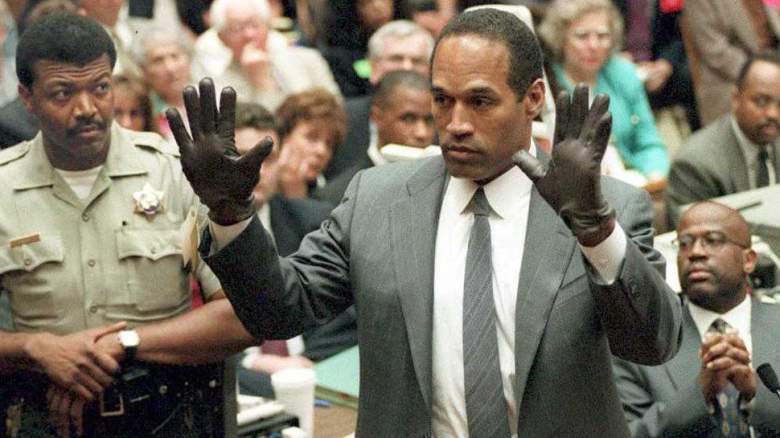
Getty O.J. Simpson
Produced and directed by Ezra Edelman, O.J.: Made in America is the first five-part installment in the 30 for 30 series.
How to Watch ‘OJ: Made in America’ Online
Every film in the complete 30 for 30 library, including OJ: Made in America, can be watched with a subscription to ESPN+.
It costs $4.99 per month, or if you also want Hulu and Disney+, you can get all three for $12.99 per month, which works out to 25 percent savings:
Get the ESPN+/Disney+/Hulu Bundle
Once signed up for ESPN+, you can watch OJ: Made in America on your computer via the ESPN website, or you can watch on your phone (iOS or Android), tablet, Roku, Fire TV Stick, Apple TV, Xbox One or other compatible streaming device via the ESPN app.
‘OJ: Made in America’ 30 for 30 Preview
The five-part documentary series was released theatrically as a film, and it won the Academy Award for Best Documentary film in 2016. The Academy subsequently banned all multi-part and/or limited series from eligibility, so this film remains a unique and distinct part of the 30 for 30 catalogue.
The film takes an unflinching and critical look at the life and times of O.J. Simpson, and it takes incredible care to capture what the city of Los Angeles — and by extension, the rest of the United States — was going through before, during, and after the 1994 murders of Nicole Brown Simpson and Ronald Goldman.
Simpson’s marriage to his first wife Marguerite and the death of their young daughter Aaren, who drowned tragically at the age of two, are also discussed. Each of the five segments adds another layer to the story, and each segment builds on the next. Edelman is careful to spend a great deal of time looking at the troubled relationship and history between O.J. and Nicole Brown Simpson, with interviews from friends, police officers, and members of the media providing disturbing details of abuse endured by Nicole. 911 calls coming from a terrified Nicole years before her murder are particularly disturbing.
The Film Covers O.J. Simpson’s Entire Life
The early parts of the film spend time getting to know a young Orenthal James Simpson as a young football star emerging from a troubled childhood in San Francisco. We also see footage of Simpson five years into his incarceration for burglary. He was found guilty and convicted in 2008, and eventually released in 2017, one year after O.J.: Made in America was released.
The film spends a good amount of time examining the things that made Simpson such a popular figure for so long. Simpson continued to be wildly popular after he retired from football. He became well known as an actor, still acting in movies like The Towering Inferno during his NFL days while appearing in even more roles after retirement. A recurring role in The Naked Gun series was his most popular, but he was also well-known.
The first part of this five-part series ends with Simpson meeting an 18-year-old Nicole Brown, who was waitressing at a disco at the time. Reports of Simpson being physically abusive towards Brown began almost immediately, and the documentary looks unflinchingly at Simpson’s disturbing history of domestic abuse in relation to Nicole. One particularly violent incident that occurred between O.J. and Nicole in 1989 is discussed in great detail, as are police reports filed by Nicole in which she fears her husband was “going to kill” her.
Also discussed are rumors O.J. was driven to jealous rages because he thought his friend and star running back Marcus Allen was having an affair with Nicole.
The murder of Nicole Brown Simpson and Ron Goldman is examined and revisited thouroughly, and never-before-seen (and highly graphic) images of the crime scene are shown and discussed. The trial itself is also featured, of course, but it almost takes a backseat to other elements presented in the film.
The Examination of Race
The changing racial dynamic in Los Angeles is discussed in detail, largely because of how important the city was to Simpson and his development. He attended USC, which was extremely close in proximity to Watts, and the film notes how several other athletes during O.J.’s heyday — Jim Brown, Bill Russell, and Muhammad Ali, among others, were speaking out about racial injustice, but Simpson never joined them. O.J.: Made in America dissects Simpson’s thoughts on race in meticulous detail. As riots and injustice occurred in South Central Los Angeles right next door, Simpson stayed home in his Brentwood estate.
Old footage utilized in the film shows how Simpson spoke about being a black athlete. “I would say there’s less prejudice in sports than any other field,” Simpson said in the 1970s. “You’re accepted as what you are, you know, an athlete and what you can do and I think this is good for anyone.”
The film suggests Simpson never really saw himself the way other black men seemed to. “He was so privileged, he was so accepted, he was so embraced, that he was immune from the reality that he could find in the mirror every morning that he was a black man.”
The fact that Simpson’s murder trial for the murders of Ron Goldman and Nicole Brown Simpson occurred in Los Angeles shortly after the Rodney King verdict is also discussed.
The film also points out the irony that the University of Southern California — Simpson’s alma mater — was also close nearby. “The institution that gave life to O.J. Simpson’s image and presence, nationally and beyond, was located right in the middle of that same neighborhood.”
Sports Illustrated said the film is: “The best 30 for 30 documentary [ESPN] has ever produced. It is thrilling and uncompromising filmmaking… and it will make you look at the most famous murder case in United States history with fresh eyes and under a larger prism.”